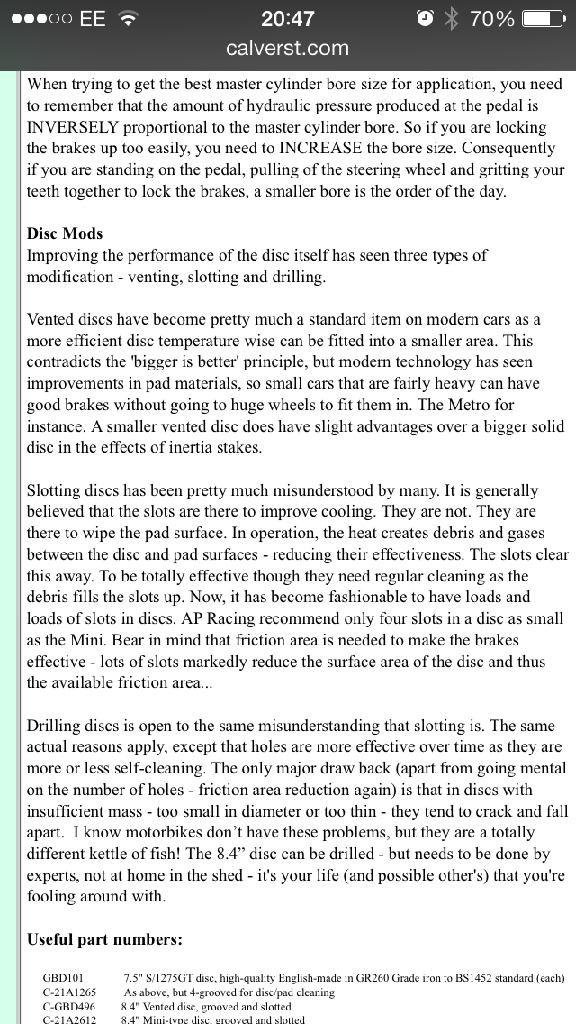In the shed wrote:Right. There are some physics and mechanics misconceptions above!!!
You put your foot on the brakes. The fluid exerts a force on the backs of the pads via the pistons. The effective pressure is force/area. The name of the game is getting as much force on the biggest area.
I don't usually get involved in these types of discussions because someone always gets a hard on and tries to tell me how wrong I am, but I really must say that from my first semester of college the general rule of friction is:
"The force of friction is independent of the apparent area of contact between the two surfaces."
See; Laws of dry friction;
http://en.wikipedia.org/wiki/Friction
True enough that the force is the pressure times the area, but that is true for the normal force of the pad onto the disk due to the pressure of the fluid. When it comes to the pad onto the disk, the normal force is already defined. It's proportional to the foot force on the pedal. The specific force (force per square area) has only the coefficient of friction to provide braking force. Not the area.
This is though a generalization and non-linear systems will not follow this precisely. Without actually testing the systems myself, I would strongly suspect that brake pads on steel are a non-linear system. However, the minimal reduction of surface area that groves will do, say around 5 to maximum 10 percent, I would also suspect no noticeable change in braking force/normal force ratio. I would also suspect that any cutting, scraping, abrading of the pad surface requires energy. That energy comes directly from the rotating motion of the disk and therefore helps increase the braking ability (again marginally).
What would be much more desirable though is actually keeping the brake pad within the designed operating temperature range. Again, without actually measuring it myself, I would suspect; Racing pads for the track, performance pads for performance street driving will probably do just fine.

